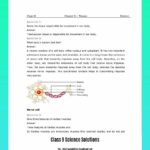West Virginia Phonics (WVP) offers a structured, research-based approach to empower students with essential reading skills. This free and accessible program provides a comprehensive toolkit for educators and parents, featuring engaging activities and decodable passages. Let’s explore how WVP can unlock a world of reading success for young learners.
Discovering the Power of West Virginia Phonics
WVP provides a solid foundation in reading by building skills gradually, from simple sounds to complex syllables. Grounded in research, it utilizes engaging stories and activities to keep children motivated while following a scientifically sound approach. This free program offers a treasure trove of resources to unlock a child’s reading potential, making it accessible to all.
Why West Virginia Phonics Might Be Effective
- Step-by-Step Learning: WVP builds skills progressively, ensuring a strong foundation before introducing more challenging concepts. This gradual approach is like building a house—a solid foundation is essential for a stable structure.
- Engaging Activities: Learning to read should be enjoyable. WVP incorporates interesting stories and activities to maintain children’s motivation and excitement about reading.
- Research-Based Methods: WVP is grounded in research on effective reading instruction, increasing its likelihood of success for diverse learners. While research in this field is ongoing, WVP aligns with current understandings of effective phonics instruction.
- Cost-Effective Resources: All WVP materials are available online for free through the West Virginia Department of Education (WVDE) and EARLY RISERS websites, eliminating cost as a barrier.
Exploring the West Virginia Phonics Toolkit
- Decodable Stories: These specialized stories use specific words that reinforce the sounds children are learning, building confidence and making reading less daunting.
- Structured Progression: WVP follows a clear sequence, starting with simple sounds (e.g., the “c” in “cat”) and progressing to blends (e.g., “bl” in “blue”) and more complex words. This structured approach provides a clear roadmap to reading success.
- Ready-Made Materials: WVP offers printable activities, lesson plans, and assessments, saving educators valuable preparation time.
Support for Educators and Families
WVP offers comprehensive support for the adults who guide young readers.
- WVDE Educator Resources: The WVDE website provides a wealth of resources for teachers, including videos, lesson plans, and links to other helpful websites.
- Early Learning Technical Assistance Center (ELTAC): ELTAC offers training to help educators effectively implement WVP, equipping them with the skills to facilitate successful reading instruction.
- Tools4Reading: This website provides free lessons, sound cards, and other valuable tools, serving as a virtual assistant for teaching phonics.
The Significance of West Virginia Phonics
Learning to read unlocks a world of knowledge and imagination. WVP equips children with the foundational skills they need to become confident, successful readers. While ongoing research continues to shape our understanding of effective reading instruction, WVP provides a robust and accessible program grounded in current best practices. It offers a promising pathway to literacy, potentially impacting a child’s future academic success.
What is West Virginia Phonics?
WVP is a robust program designed to provide a strong foundation in reading. Built on educational research, it offers a structured, step-by-step approach to phonics instruction. This free and accessible program empowers both teachers and parents to support children’s literacy development.
WVP covers essential elements like CVC words (consonant-vowel-consonant words like “cat,” “dog,” and “sun”), the floss rule (doubling the final consonant before adding -ing or -ed, as in “hopping” or “tagged”), and more complex consonant blends and digraphs (like “sh,” “th,” and “ch”). A key component is the use of decodable passages—short texts designed to reinforce newly learned phonics skills. This allows children to apply their knowledge in a practical context.
While research suggests that structured phonics programs like WVP can be effective, individual learning styles vary. Ongoing research in reading instruction continually evolves best practices. WVP provides a strong framework, allowing educators and parents to adapt the approach to meet individual needs. It acknowledges the importance of a balanced literacy approach, integrating explicit phonics instruction with rich reading experiences.
| Feature | Description |
|---|---|
| Research-Based | Grounded in scientific evidence of effective reading instruction methods. |
| Structured | Progressive curriculum with systematic skill development. |
| Decodable Passages | Provides opportunities to practice reading texts aligned with learned phonics skills. |
| Free Access | Available at no cost to educators and families. |
| Key Skills | Focus on CVC words, floss rule, complex consonants, and more. |
While WVP offers a strong foundation, the concept of a “perfect” program is subjective. Ongoing research continues to inform best practices in reading instruction. WVP’s effectiveness likely depends on its implementation and adaptation to individual learner needs.
Is West Virginia Phonics Research Based?
WVP is deeply rooted in scientific research and proven teaching methods. It aligns with the principles of “explicit and systematic phonics” highlighted by the National Reading Panel (2000) as essential for effective reading instruction.
WVP employs a multisensory approach, engaging learners through visual, auditory, and kinesthetic activities. This caters to diverse learning styles, making phonics instruction more effective and memorable. Research conducted by West Virginia University suggests WVP improves phonics skills and reading fluency, particularly for struggling readers.
WVP connects phonics instruction to broader literacy development, equipping students with the skills needed for future academic and professional success. Its free and accessible resources democratize access to high-quality literacy instruction.
While current research is promising, the study of reading instruction is an ongoing process. Staying informed about current research and consulting with educators empowers parents and educators to make informed decisions based on the latest findings.
Where did West Virginia Phonics go?
WVP, a research-backed program for teaching foundational reading skills, has a history of supporting literacy development in West Virginia. While it was once a staple in schools, it’s no longer a core component of the state curriculum.
Though not officially mandated, WVP resources remain available online for free, primarily through the Tools 4 Teachers website. This suggests that while not officially endorsed, the program’s creators still recognize its value.
The reasons for this shift are likely complex, potentially involving the emergence of newer programs, budget constraints, or evolving educational priorities. Further research could illuminate the decision-making process behind these curriculum changes.
Despite not being a core curriculum component, WVP remains a valuable resource for parents and teachers. Its materials can be incorporated into home learning environments or used as supplemental classroom activities.
| Resource Type | Potential Use |
|---|---|
| Phonemic Awareness Activities | Developing awareness of sounds in words |
| Letter-Sound Correspondence Charts | Teaching the relationship between letters and sounds |
| Decodable Reading Passages | Providing targeted reading practice |
| Word Lists | Enhancing vocabulary and spelling skills |
| Games and Puzzles | Making learning fun and engaging |
While WVP has a strong research base, educational research is a continuous process. Combining proven methods with the latest research can effectively support students. The continued availability of WVP suggests its enduring value. Choosing the right reading program depends on various factors, and WVP remains a valuable option. Looking for more resources? You can explore vfr cloud clearances or delve into the wildland fire learning portal.
- SYBAU See You Baby Meaning: Gen Z Slang Evolves - July 1, 2025
- Unlock Your Inner Youth: Lifestyle Secrets for a Vibrant Life - July 1, 2025
- Decode SYBAU Meaning: Gen Z Slang Explained - July 1, 2025





